The fair-skinned blue-eyed person speaks Spanish. The houses and shopping centers look European but are uniquely Argentine. The landscape is clean and the farms are like farms in British Columbia. But you notice the differences. In Argentina, signs are tacked on the fences around the fields advertising the brands of seed and the chemicals used to grow the crop in that particular field. The crops with the signs always look perfect. All the billboards tout various chemical and seed manufacturers, and on one of the billboards there is the boast that a certain brand of alfalfa has better modifications than all other brands of alfalfa. Nobody is protesting GM here, but you see a few organic foods in the super markets.
We weren’t making very good time one day, and, on a whim, we stopped when we saw several hangars beside the highway, with crop dusters inside. A mechanic and a pilot were changing a pushrod seal on a Piper PA12. Bill offered to give them a hand. The plane was modified for spraying, with a GPS device for staying on track mounted on the cowling, various fans and pumps, the usual nozzles along the wings, and a 250 liter tank mounted behind the pilot. Like most Ag machines, the leading edges of the wings were dented, the interior was utilitarian, but the paint was fresh. The mechanics also maintained two Pawnees, but the cost of engine repairs had grounded one.
As we drove, every plane we saw was an agricultural machine. Thrushes, Air Tractors, Cessnas and Piper Pawnees. The planes tended to be small, presumably because the fields were smaller than we see in the grain belts of North America, but they were busy. The operators are probably affected by the competition from mega-sized Massey Ferguson and John Deere sprayers that do many rows at a time.
Croplands gave way to trees. Forests of eucalyptus trees and pine are planted in straight rows and harvested as crops. We drove on through grasslands and cattle pastures, seeing more and different birds. Eventually we reached the Parana River, which joins up with the Uruguay to form the the Rio de La Plata at Buenos Aires. The Parana forms a huge marshland that stretches for hundreds of miles. The Argentines have built bridges and causeways across the wetlands, and, as we drove about 30 miles across the causeway from Rosario to Victoria , the wetlands were flooded. Gauchos on horses were swimming herds of cattle through the floodwaters to the few areas of higher ground.
Argentines keep different hours from North Americans. Businesses may open at 8 or 9, or perhaps not at all on any day. Almost everything closes between noon and four, and nothing opens on a Sunday. Restaurants may open at 8 PM and close at midnight or 1 AM. No restaurants or coffee shops are open at 8 AM.
Camping is big in Argentina, and municipal and private campsites are common. The Argentines don’t view camping the way we do. We like the peace and quiet of the great outdoors, and respect the privacy and peace of others. Argentines like loud music, usually folkloric with a catchy beat, which, at a good campsite, may be blasted over a central PA system for all to enjoy. Sometimes the music shuts down at 8:30 PM, or it may go on until 3 AM. Adults socialize over big barbeques. A swimming pool or swimming hole on a river is a must, so the kids can shriek and play together. Kids don’t go to bed until late. At one campsite they played soccer until 2 AM. At another they raced ATVs wildly through the overcrowded campsite most of the night. At the latter site, a couple with 3 talkative kids, set up their tent about 8 feet away from us at 1 AM. They were still setting up and talking loudly at 2:30 AM. Usually we camp as far away as possible from everyone else.
The water in the campground swimming pools does not sparkle. Clean toilets are not a priority. Like most of Argentina, washrooms are only “surface clean”; the walls and light switches, corners and behind doors are never cleaned. Some facilities are fairly pleasant, but some are downright appalling,
On a positive note, unlike much of Central and South America, most have hot water showers. Alas, at some campgrounds the showers are only open for a few hours, usually something like 9 to 11 PM.
Toilet paper, hot water in the sinks and hand towels are not provided in most Central and South American washrooms. Hand soap is occasionally available. Even so, many of the loos are quite acceptable. The worst are in Peru and Argentina. The best are in Colombia.
We just crossed into Brazil and have arrived at a delightful campsite at Foz de Igacu. Brazil looks pretty good so far.
Igazu Falls in Argentina
Igacu Falls in Brazil

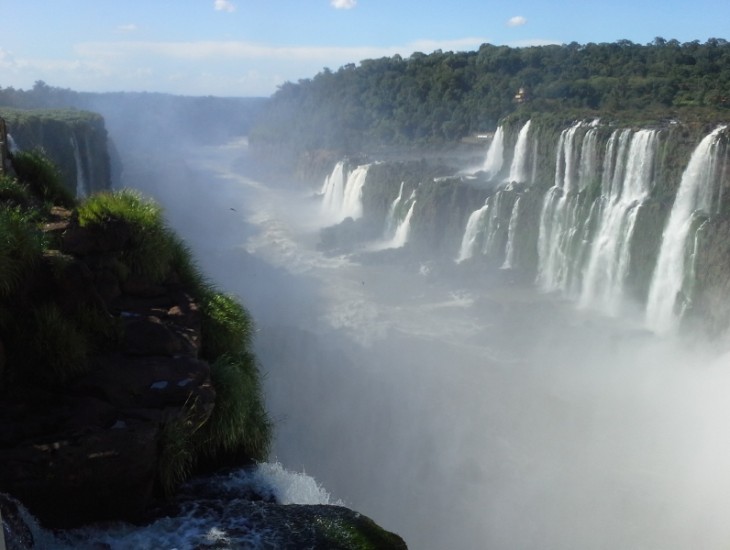
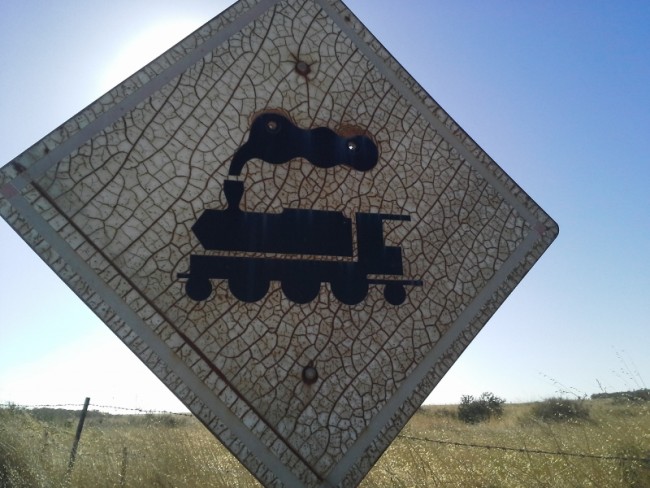
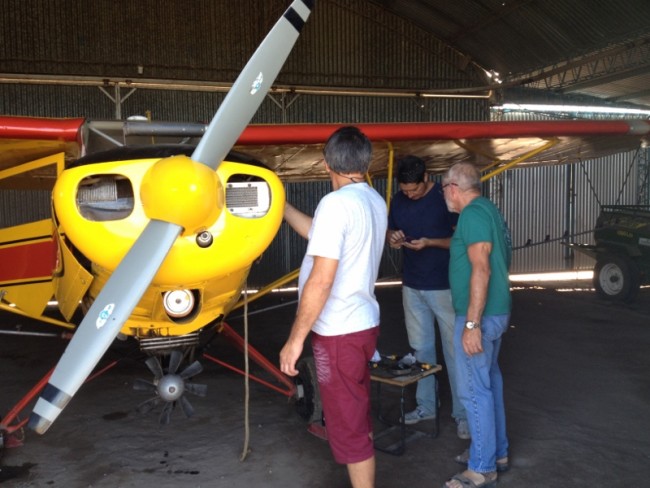
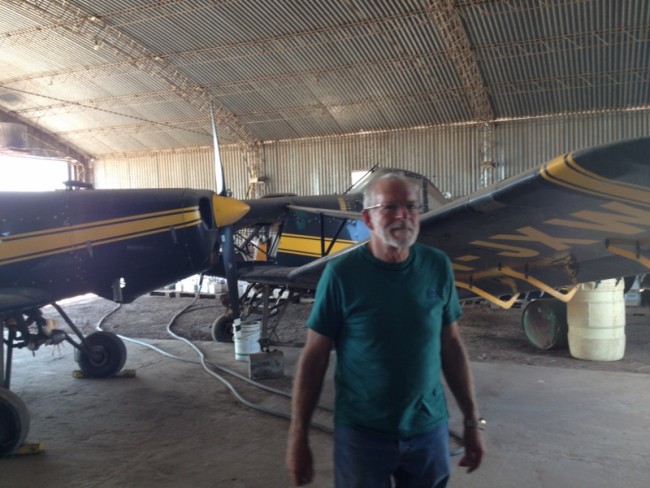
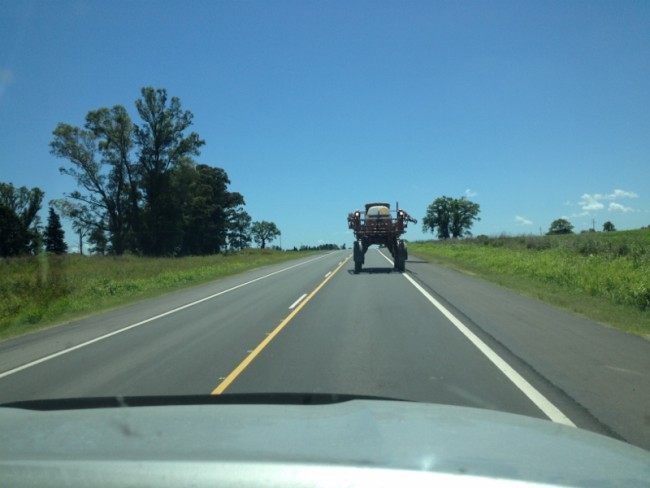
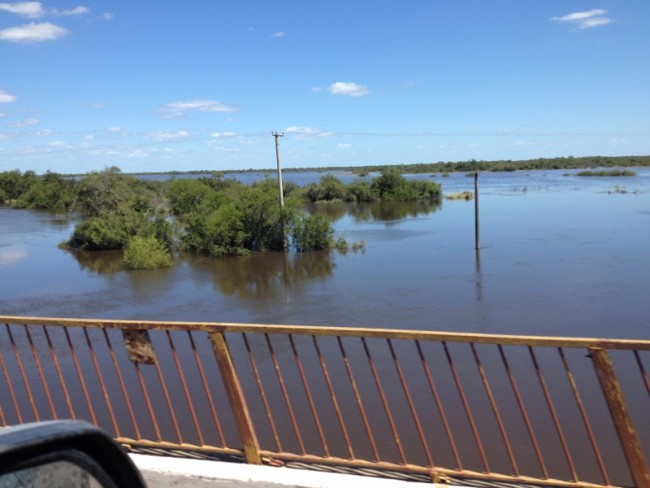
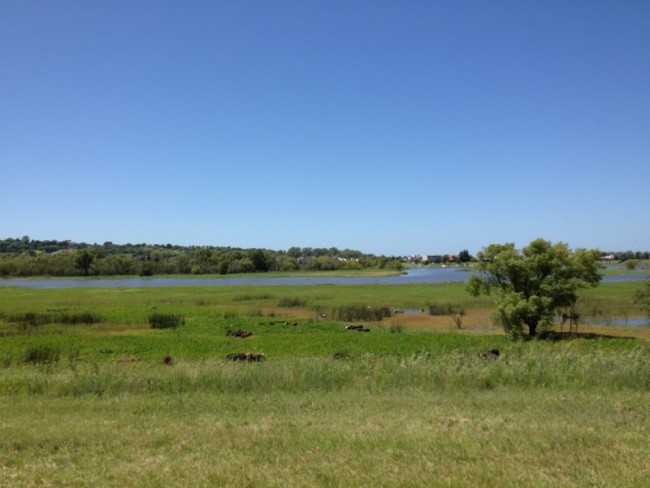
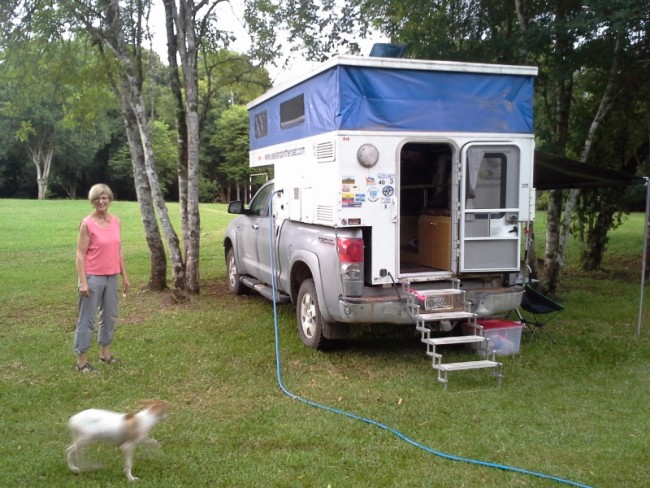
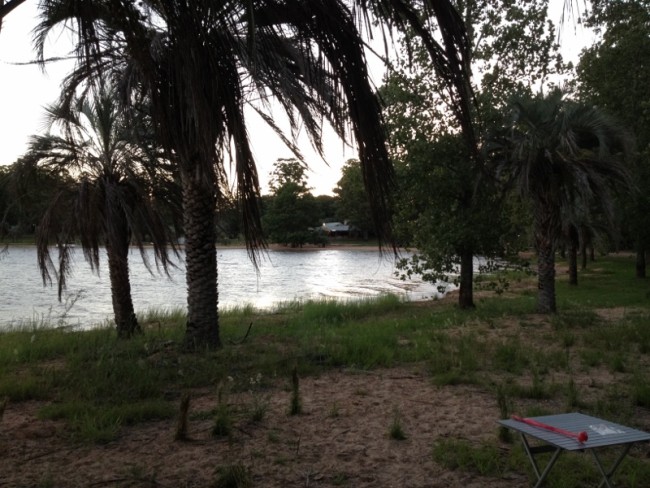
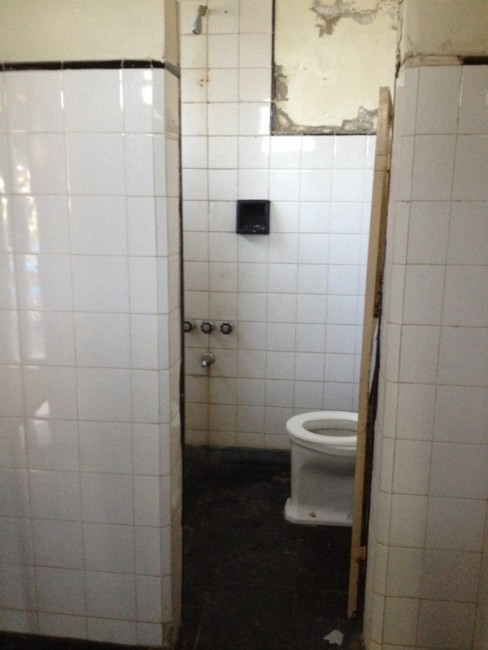
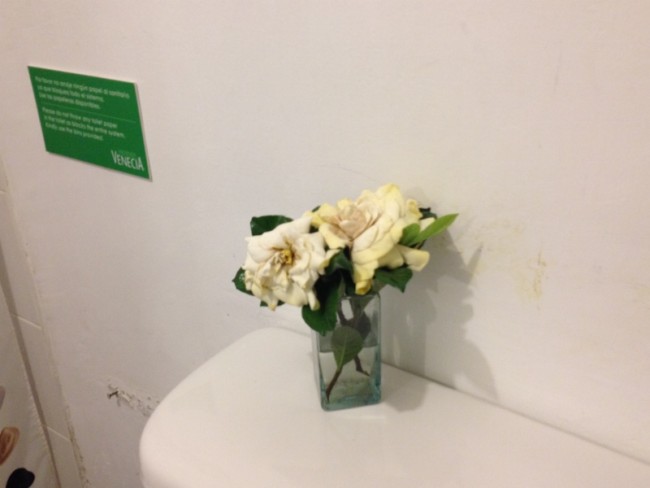
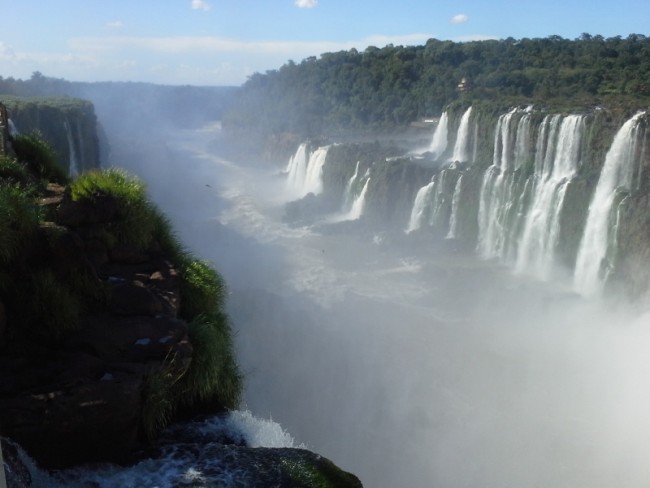
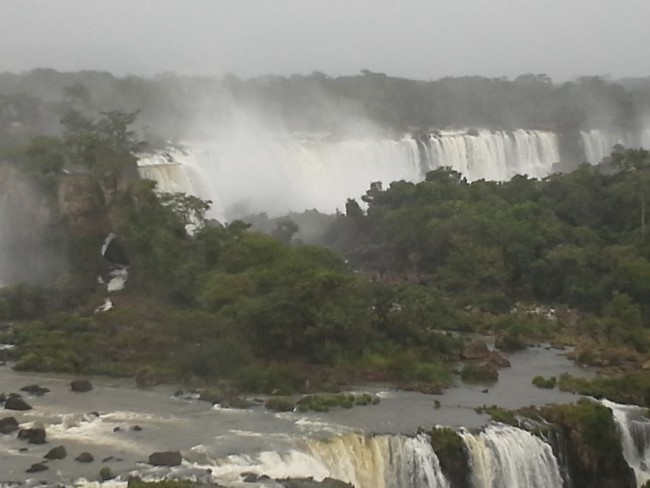
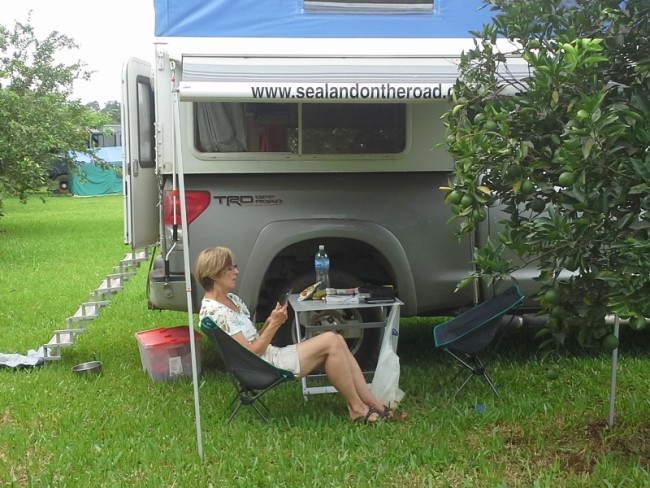
Dear Nancy and Bill
I have just caught up with your January adventures. I love the great photos and wry, economical comments, so very Nancy and Bill. Capi always looks full of joy to be a part of the journey. It is such an amazing trip and can’t wait for the next instalments. Thank you for sharing it with us all. My own recent forays are tame in comparison, nothing more than a few hours’ travelling from home: London, Paris, Scotland and Cornwall next week as winter storms gather. Hope we are not blown out to sea from St Ives! XXX Sue
Hi Bill and Nancy…I finally found your travel blog! What an adventure you are having. Love all the pictures and stories. Capi seems to have made your trip that much more interesting that’s for sure. Safe travels…Chrystal